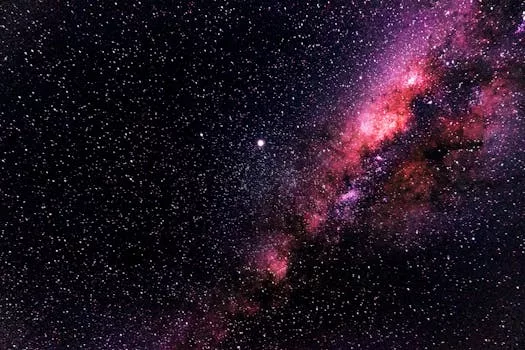
“
Beyond the Milky Way: Imagining New Worlds and Possibilities
Introduction to Space Exploration
Beyond the Milky Way: Imagining New Worlds and Possibilities is an exciting topic that has captivated human imagination for centuries. The possibility of exploring and discovering new worlds has driven scientists and philosophers to continue pushing the boundaries of space exploration. From the early days of astronomy to the latest advancements in space technology, our understanding of the universe has expanded exponentially. In this article, we will delve into the latest discoveries and theories in space exploration, exploring the possibilities of new worlds and galaxies beyond the Milky Way.
Understanding the Milky Way Galaxy
The Milky Way is a barred spiral galaxy, consisting of hundreds of billions of stars, stellar remnants, interstellar gas, dust, and dark matter. It is estimated to be approximately 100,000 light-years in diameter and is thought to contain between 200 and 400 billion stars. The Milky Way is just one of the billions of galaxies in the observable universe, and it is believed to be part of the Local Group of galaxies, which includes the Andromeda Galaxy and several smaller galaxies.
Exploring New Worlds and Galaxies
With the advancement of space technology, scientists have been able to explore and discover new worlds and galaxies beyond the Milky Way. The discovery of exoplanets, which are planets that orbit stars outside of the Milky Way, has opened up new possibilities for the search for life beyond our galaxy. The Kepler space telescope, launched in 2009, has discovered thousands of exoplanets, and future missions such as the James Webb Space Telescope and the Habitable Exoplanet Imaging Mission (HabEx) will continue to search for life beyond our galaxy.
The Search for Life Beyond the Milky Way
The search for life beyond the Milky Way is an exciting and ongoing area of research. Scientists are using a variety of methods to search for life, including the detection of biosignatures, which are signs of biological activity, such as the presence of oxygen or methane in a planet’s atmosphere. The discovery of exoplanets with conditions similar to those of Earth has also raised hopes of finding life beyond our galaxy. For a deeper exploration of our imaginative pursuits in the cosmos, check out Cosmic Creativity: How Imagination Soars Beyond the Constellations.
Conclusion and Takeaways
In conclusion, the exploration of new worlds and galaxies beyond the Milky Way is a fascinating and rapidly evolving field of research. The latest discoveries and theories in space exploration have expanded our understanding of the universe and have raised new possibilities for the search for life beyond our galaxy. The key takeaways from this article are:
- The Milky Way is just one of the billions of galaxies in the observable universe.
- The discovery of exoplanets has opened up new possibilities for the search for life beyond our galaxy.
- Scientists are using a variety of methods to search for life, including the detection of biosignatures.
- The discovery of exoplanets with conditions similar to those of Earth has raised hopes of finding life beyond our galaxy. For more insights, read From Stardust to Dreams: Imagining Life Beyond the Stars.




